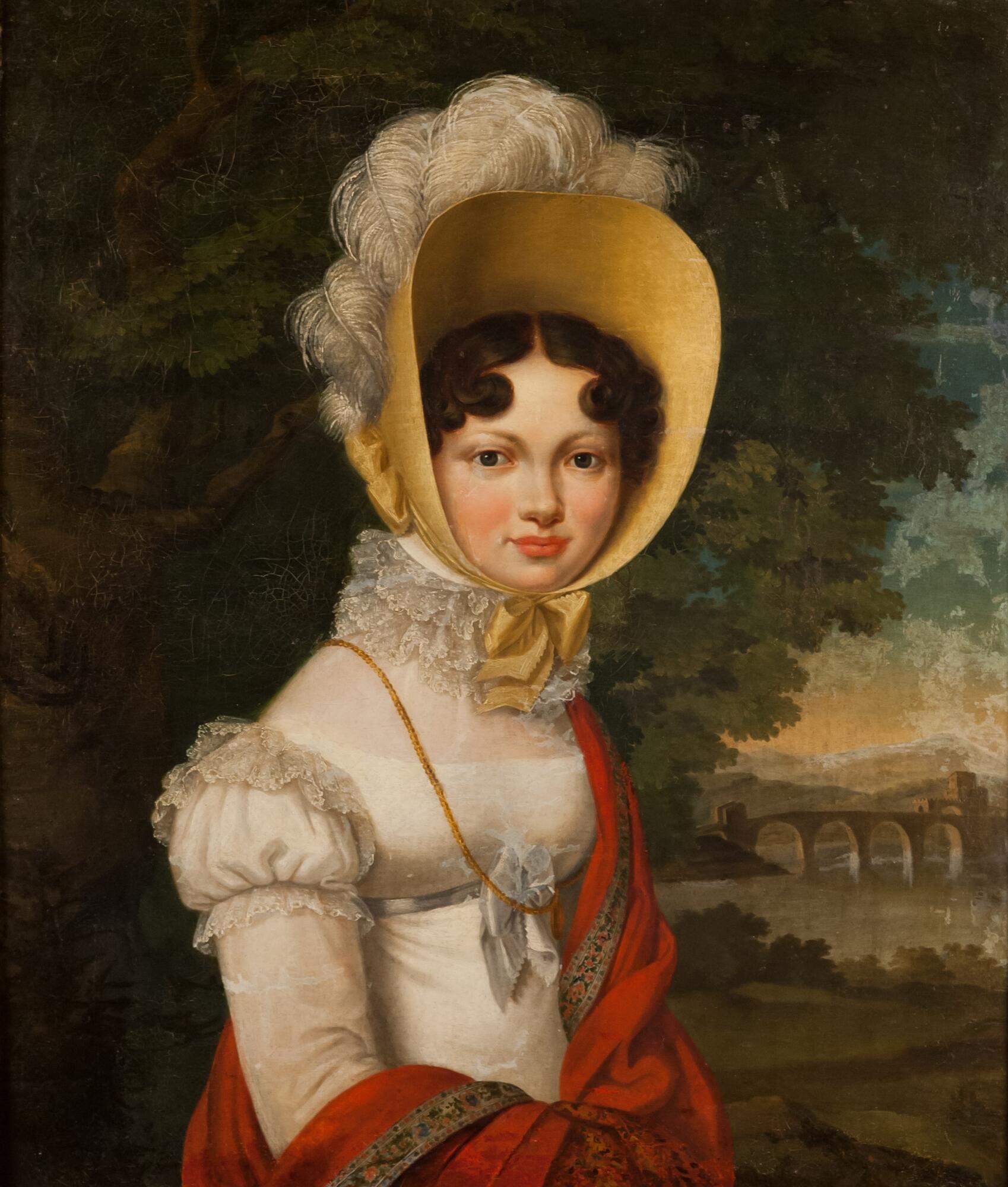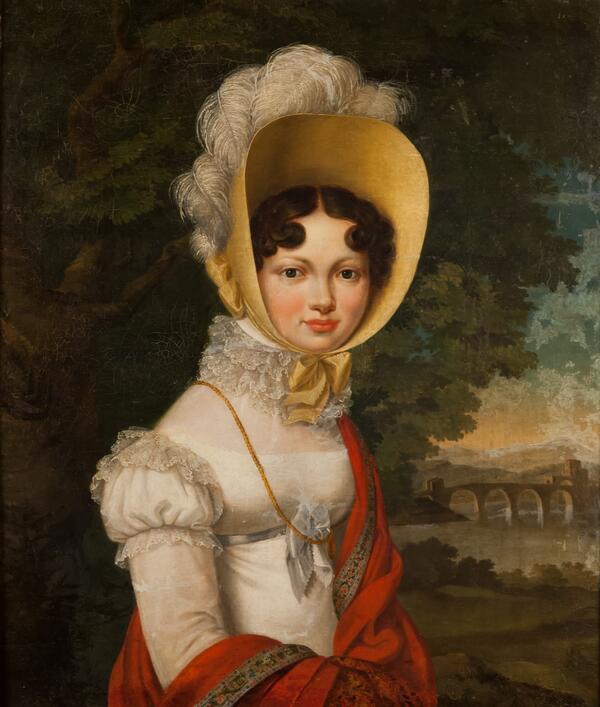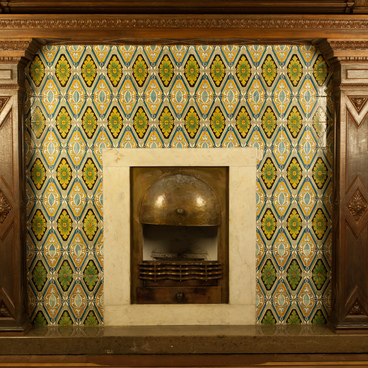The portrait is of Grand Duchess Catherine Pavlovna (b. 1788, Tsarskoye Selo – d. 1819, Stuttgart), the fourth daughter of Emperor Paul I and Empress Maria Feodorovna. She was named after her famous grandmother, Empress Catherine the Great. The charming Grand Duchess was a celebrity of the Russian court of the early 19th century. Emperor Alexander I’s favorite sister, she was described by contemporaries as an elegant beauty with a sharp mind and a healthy sense of self-confidence. Catherine’s first marriage was to Duke George of Oldenburg (m. 1809-1812). In 1816 her second marriage earned her the title of Queen of Württemberg which she held until her death in 1819.
The picture is a copy from a portrait by a German-born French painter Henri−François Riesener (b. 1767 – d. 1828). The original painting is now kept in Tver Regional Art Gallery.
Henri−François Riesener. Portrait of Grand Duchess Catherine Pavlovna of Russia
Riesener came to work in Russia in mid-1810s. It was a very prosperous time for any painter as the portraits were in high demand.
The portrait of Grand Duchess Catherine was copied extensively and probably considered a reference portrait of an aristocrat.
The sitter is wearing a yellow poke bonnet. Its tall crown was specially designed to contain the wearer’s hair inside. Her face is framed by a prominent brim, which narrows down around the crown.
The sitter’s dress is tailored after the Empire fashion. Empire dresses were usually made of very light, almost transparent fabric, with a fitting bodice and a loosely falling skirt. The waistline was very high up, and a belt is placed right below the bust. The skirt could be trimmed with ruffles. The bodice was usually cut rather low, either rounded or square. Puffed sleeves and shawls were extremely popular. In the portrait, Grand Duchess is wearing a scarlet shawl with bright fancy trimming.
The background in the portrait by Riesener is a desert landscape with a small building up on the hill on the left and some water in the right corner. The background done by an unknown artist in the portrait from Alupka is quite different.
The painting had been part of the Vorontsov collection in Odessa until 1905. There had been plans to evacuate the collection because of the risk of bombing during the Crimean war, but they were not moved until 1905. Part of the Vorontsov collection ended up in Alupka, including this portrait.
The picture is a copy from a portrait by a German-born French painter Henri−François Riesener (b. 1767 – d. 1828). The original painting is now kept in Tver Regional Art Gallery.
Henri−François Riesener. Portrait of Grand Duchess Catherine Pavlovna of Russia
Riesener came to work in Russia in mid-1810s. It was a very prosperous time for any painter as the portraits were in high demand.
The portrait of Grand Duchess Catherine was copied extensively and probably considered a reference portrait of an aristocrat.
The sitter is wearing a yellow poke bonnet. Its tall crown was specially designed to contain the wearer’s hair inside. Her face is framed by a prominent brim, which narrows down around the crown.
The sitter’s dress is tailored after the Empire fashion. Empire dresses were usually made of very light, almost transparent fabric, with a fitting bodice and a loosely falling skirt. The waistline was very high up, and a belt is placed right below the bust. The skirt could be trimmed with ruffles. The bodice was usually cut rather low, either rounded or square. Puffed sleeves and shawls were extremely popular. In the portrait, Grand Duchess is wearing a scarlet shawl with bright fancy trimming.
The background in the portrait by Riesener is a desert landscape with a small building up on the hill on the left and some water in the right corner. The background done by an unknown artist in the portrait from Alupka is quite different.
The painting had been part of the Vorontsov collection in Odessa until 1905. There had been plans to evacuate the collection because of the risk of bombing during the Crimean war, but they were not moved until 1905. Part of the Vorontsov collection ended up in Alupka, including this portrait.



